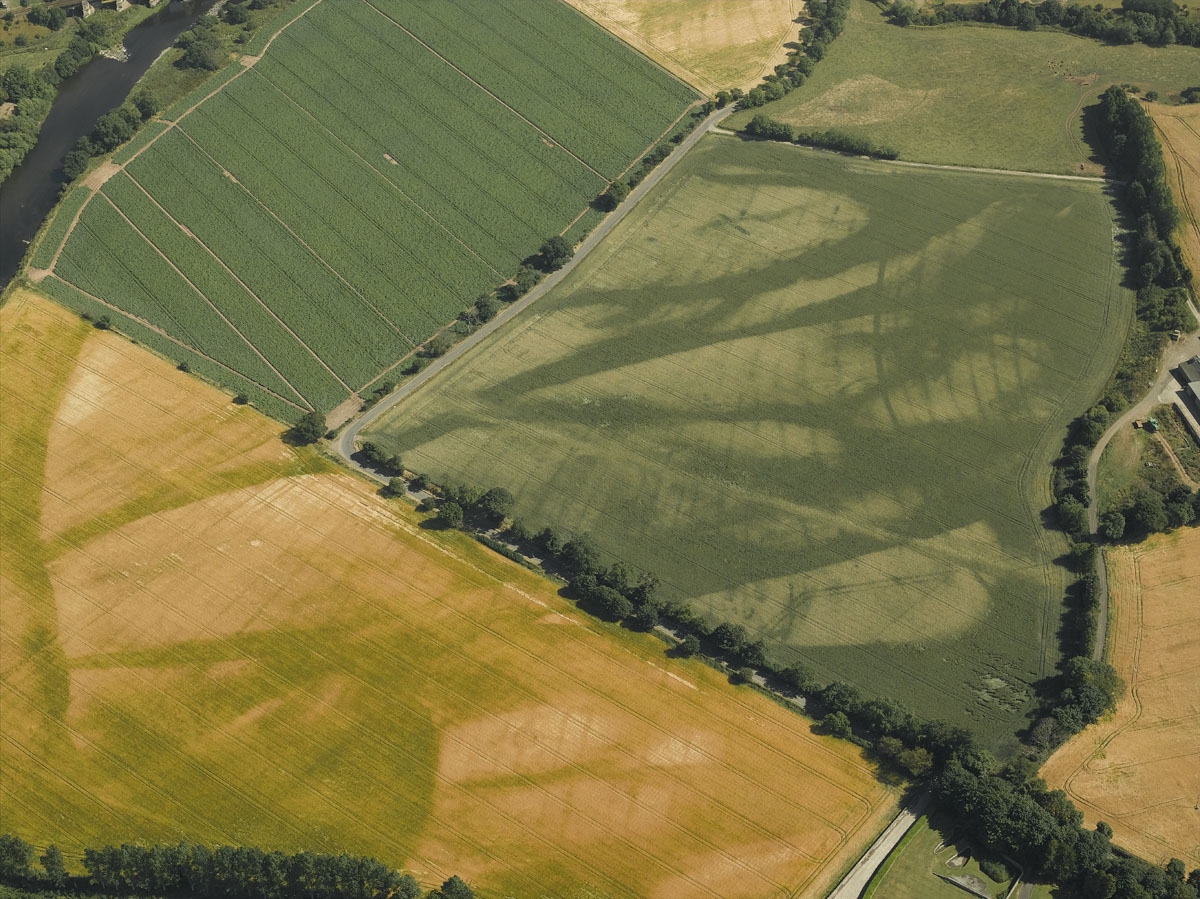Although modern farming is fully mechanised, evidence for medieval or post-medieval open fields of ridge and furrow does survive, although often it’s only visible as cropmarks in aerial photographs. Cropmarks of curving lines (reverse-S shapes) reflect the way in which large teams of oxen ploughed open, unenclosed fields. The team had to start turning well before the end of each rig, creating a reverse-S shaped ridge of ploughed ground and an adjacent furrow. It is the furrows that may show in aerial photographs.

Sinuous parallel lines in the fields at Mains of Gallery, Angus, mark the presence of former medieval/post-medieval ridge and furrow. Although the ridges have been flattened by modern farming, the furrows have survived and become visible in dry summers. The reverse-S curve of the furrows is typical of medieval fields.
HES DP010805